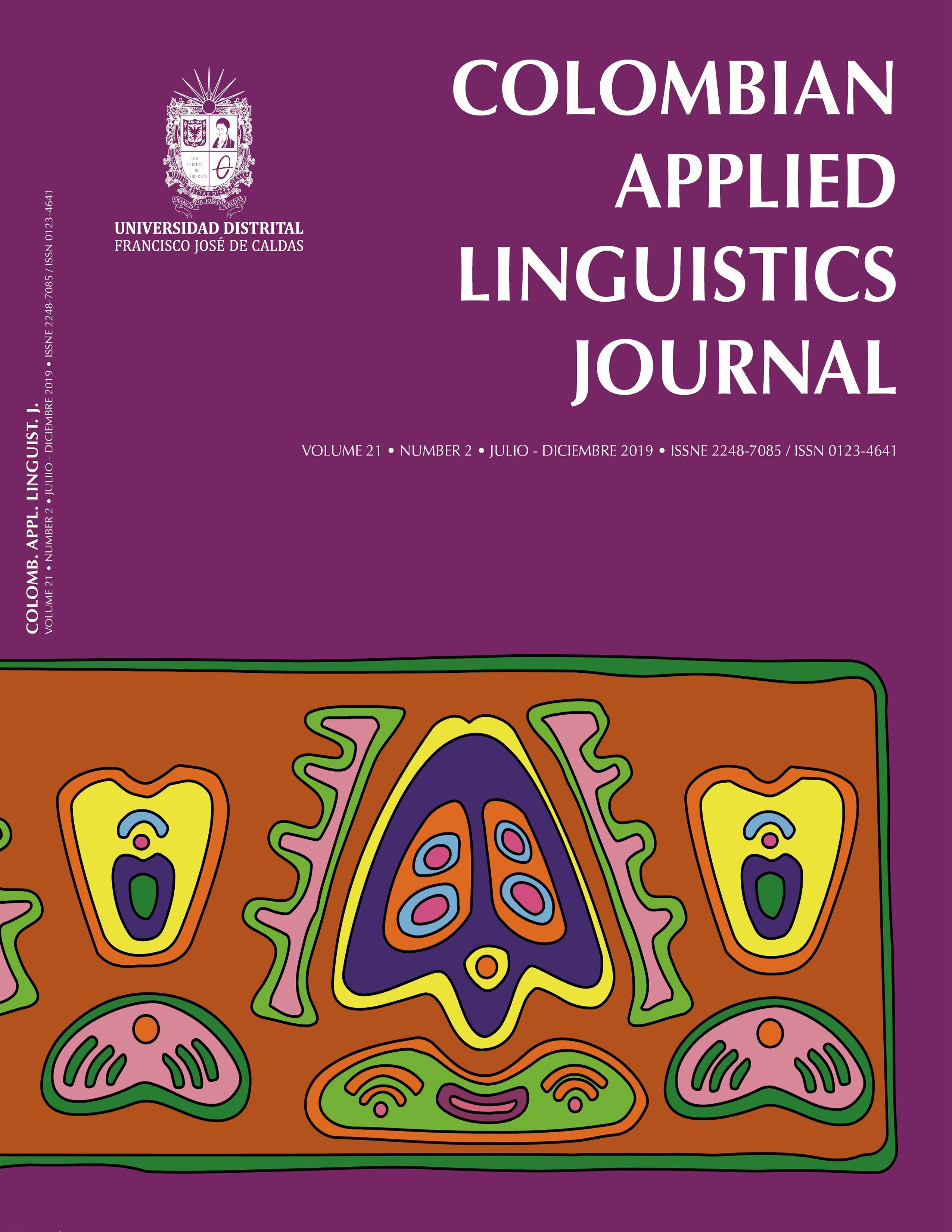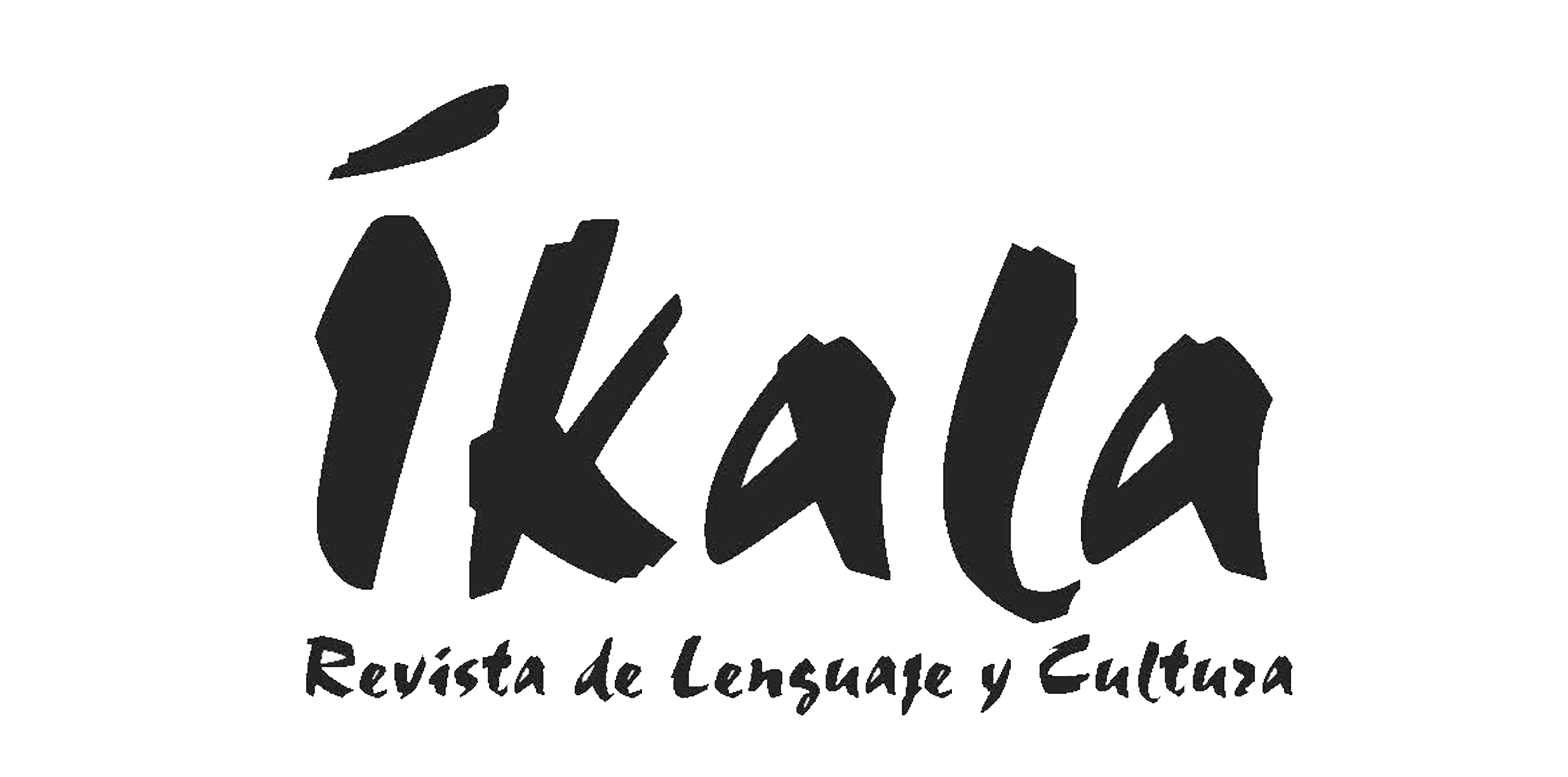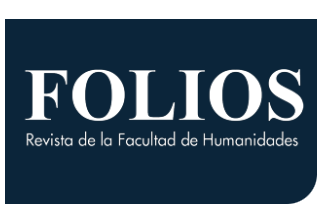DOI:
https://doi.org/10.14483/22487085.15526Published:
2019-07-01Issue:
Vol. 21 No. 2 (2019): July-DecemberSection:
EditorialNew Editors and New Challenge at the Colombian Applied Linguistics Journal - CALJ
Keywords:
- (es).Keywords:
- (en).Downloads
How to Cite
APA
ACM
ACS
ABNT
Chicago
Harvard
IEEE
MLA
Turabian
Vancouver
Download Citation
A discussion of the idea that the denomination of ‘applied linguistics’ is restricted has been evolving in academic settings. For instance, while applied linguistics and language teaching may well be associated, their relationship implies a specific space of applicability in education in connection with -but also beyond- language practices. Although linguistic knowledge can be applied to activities other than language teaching, public interest in language teaching has been of great importance in terms of contributing to this field. The knowledge that has been scientifically produced by linguists about the nature of human language -how it is learned and what role it plays in the life of people and communities- belongs to two dimensions of knowledge that language teachers are expected to have: the disciplinary and research dimensions.
The aforementioned ideas suggest a continuous reconstruction and reconceptualisation of applied linguistics as a means to address issues of language-use in close relation with other related disciplines; in fact, psycholinguistics, sociolinguistics, communication ethnography, pragmatics and discourse analysis have contributed to the applied, the interdisciplinary and the educative dimensions of linguistics. This constitutes a challenge for the editorial practices at the Colombian Applied Linguistics Journal (CALJ) in providing an interdisciplinary field of reflection and action.
In line with that thought, we would like to thank the former CALJ editor, Dr Amparo Clavijo Olarte, for guiding the evolution of editorial practices that has positioned the journal at a high level within the local and global academic and research community. In this regard, we would also like to disclose to the CALJ readership our roles as new heads of the editorial team. Professors Quintero and Bonilla are honoured to be given the opportunity to assume the challenge of continuing to foster authorship in this important journal. We are encouraged and committed to continue working to collate the discussions of those who are eager to share their thoughts and to meet the demands of quality from actors in a wide applied linguistics society by means of the CALJ. With the ongoing collaboration of the peer scholars from different universities and research groups who participate in the journal committees, as well as the technical group and the administrative staff of Universidad Distrital Francisco José de Caldas, such a challenge will surely be met.
To return to the first part of this editorial, this second issue in Volume 21 of the journal comprises discussions involving the complexity and interdisciplinarity of applied linguistics in different areas of language teaching. Teachers’ identity, interculturality, language and technology, professional development, assessment, critical literacy, racism and critical pedagogy are those areas in which such complexity is explored, in addition to the authors providing insights for future practice.
The first article, entitled ‘Exploring English Learners’ Identity Formation as Low and High Investors in their Learning Process’, reports on a study that revolved around the link between English learners’ academic investment and identity construction. The article is written by Maritza Collazos Moná and Luis Fernando Gómez Rodríguez. The editors would like to express their condolences to the relatives, friends and colleagues of Luis Fernando on his passing a few months ago, and this article serves as an opportunity to honour and preserve his memory. The second article, ‘Intercultural Awareness and its Misrepresentation in Textbooks’, is written by Edwin Henao, José Gómez and Jorge Murcia. It discusses the reductionist and instrumentalist tendency of the concept of intercultural awareness present in the textbook series adopted by the Colombian National Bilingual Programme 2015-2025.
In ‘El discurso del racismo: estructuras y estrategias discursivas’, which was published in Spanish, Sandra Soler Castillo discusses the relationship between racism and discourse, and problematises the representation of the racialised black subject through a grammar of racism in response to a white European hegemonic discourse.
In the fourth article, ‘Smartphone screen recording apps: An Effective Tool to Enhance Fluency in the English Language’, Catherine Pardo Soto and Cecilia Cisterna Zenteno report on an action research study that aimed to assess the effectiveness of using a mobile video recording app to increase students’ English speaking fluency at a school in Chile.
The fifth article, ‘The Use of Infographics to Enhance Reading Comprehension Skills among Learners’, written by Lorena Andrea López Cupita and Laura Milena Puerta Franco, revolves around fostering university students’ English skills in reading short academic texts through a combination of texts and graphs (i.e. infographics).
‘Language Assessment Literacy and the Professional Development of Pre-Service Language Teachers’, which is the sixth article and is authored by Frank Giraldo and Daniel Murcia, draws upon the relation between language assessment literacy and the professional development of language teachers through an exploratory action research study that examined the impact of a language assessment course on pre-service teachers in a Colombian language teaching programme.
Finally, the article written by Ruth Elena Quiroz Posada and Ana Elsy Díaz Monsalve, and published in Spanish, ‘Quejas y expectativas de estudiantes de licenciatura en lenguas extranjeras frente a las clases de inglés: estudio de caso desde el análisis crítico del discurso’, contains a report on a multiple-case study on the identity of foreign language pre-service teachers as perceived by speakers of other languages in two contexts: Brazil and Chile. With the articles contained in this issue, we have decided to take up the challenge of reconstructing and reconceptualising applied linguistics and thus continue to make the Colombian Applied Linguistics Journal a recognised research and academic forum for both local and international authors.
Metrics
License
This work is licensed under a Creative Commons Attribution-NonCommercial-NoDerivatives 4.0 International License.
Attribution — You must give appropriate credit, provide a link to the license, and indicate if changes were made. You may do so in any reasonable manner, but not in any way that suggests the licensor endorses you or your use.
NonCommercial — You may not use the material for commercial purposes.
NoDerivatives — If you remix, transform, or build upon the material, you may not distribute the modified material.
The journal allow the author(s) to hold the copyright without restrictions. Also, The Colombian Apllied Linguistics Journal will allow the author(s) to retain publishing rights without restrictions.









